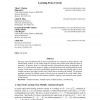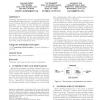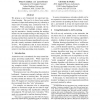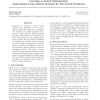1419 search results - page 22 / 284 » Approximation Methods for Supervised Learning |
JMLR
2010
13 years 3 months ago
2010
For many supervised learning tasks it may be infeasible (or very expensive) to obtain objective and reliable labels. Instead, we can collect subjective (possibly noisy) labels fro...
KDD
2001
ACM
14 years 9 months ago
2001
ACM
Clustering algorithms have become increasingly important in handling and analyzing data. Considerable work has been done in devising effective but increasingly specific clustering...
NAACL
2007
13 years 10 months ago
2007
We propose a new framework for supervised machine learning. Our goal is to learn from smaller amounts of supervised training data, by collecting a richer kind of training data: an...
ICML
2005
IEEE
14 years 9 months ago
2005
IEEE
Mappings to structured output spaces (strings, trees, partitions, etc.) are typically learned using extensions of classification algorithms to simple graphical structures (eg., li...
CORR
2004
Springer
13 years 8 months ago
2004
Springer
This paper describes the National Research Council (NRC) Word Sense Disambiguation (WSD) system, as applied to the English Lexical Sample (ELS) task in Senseval-3. The NRC system ...




